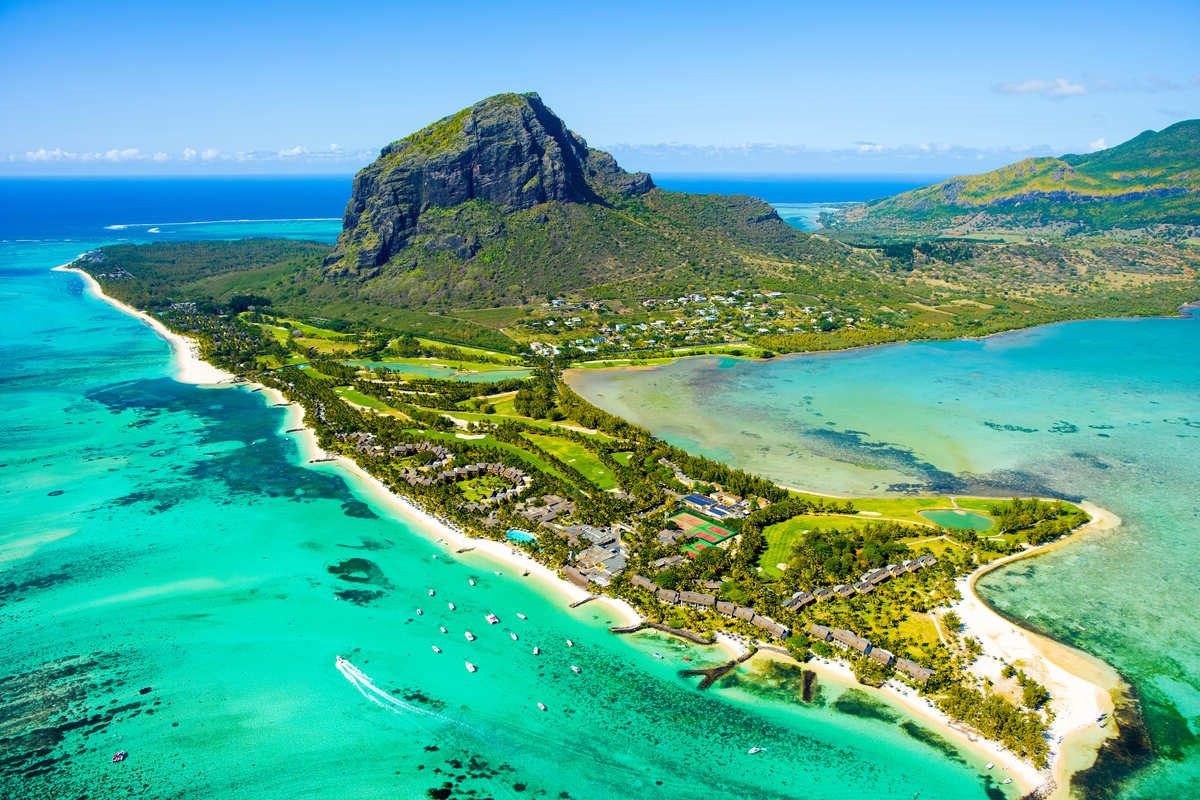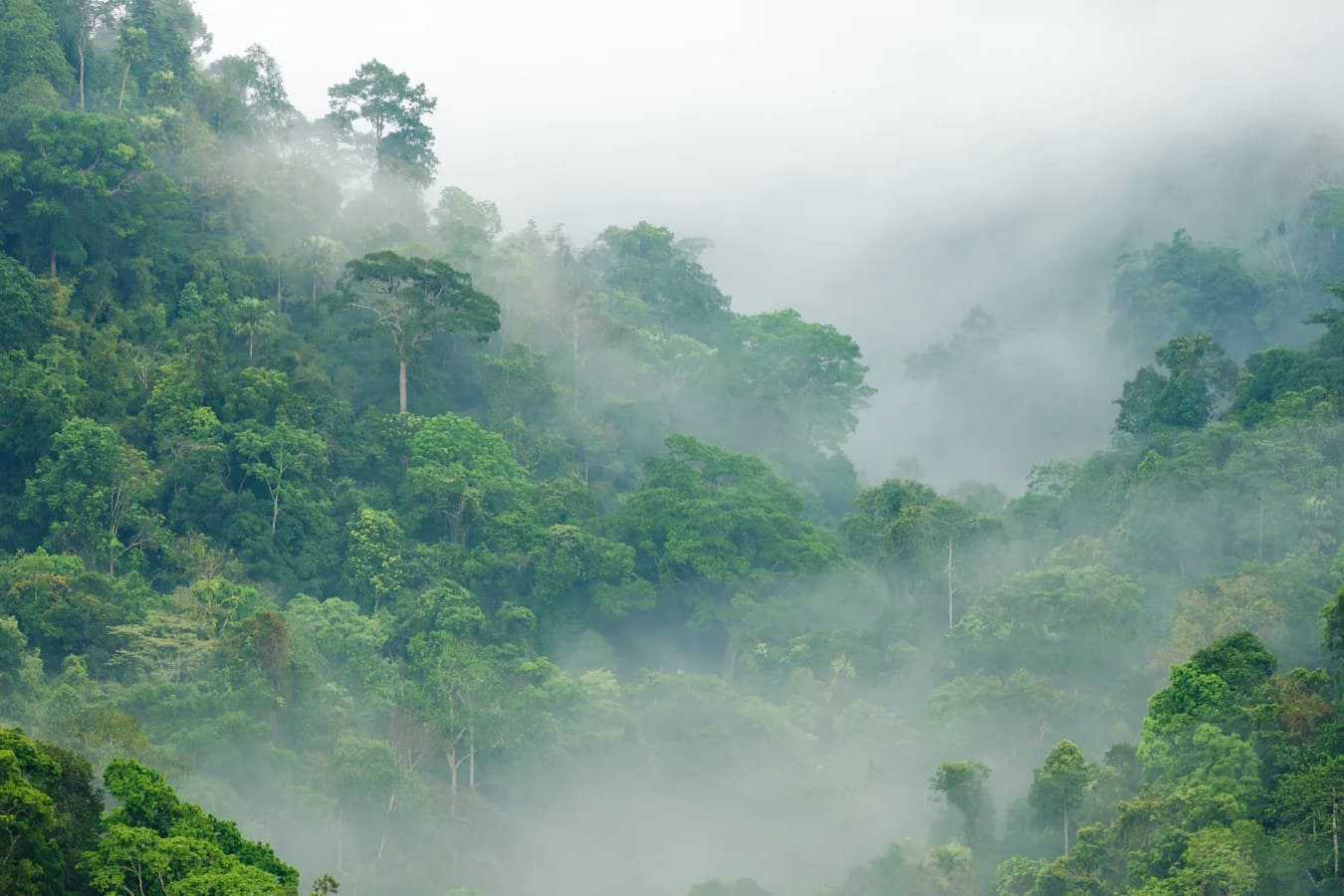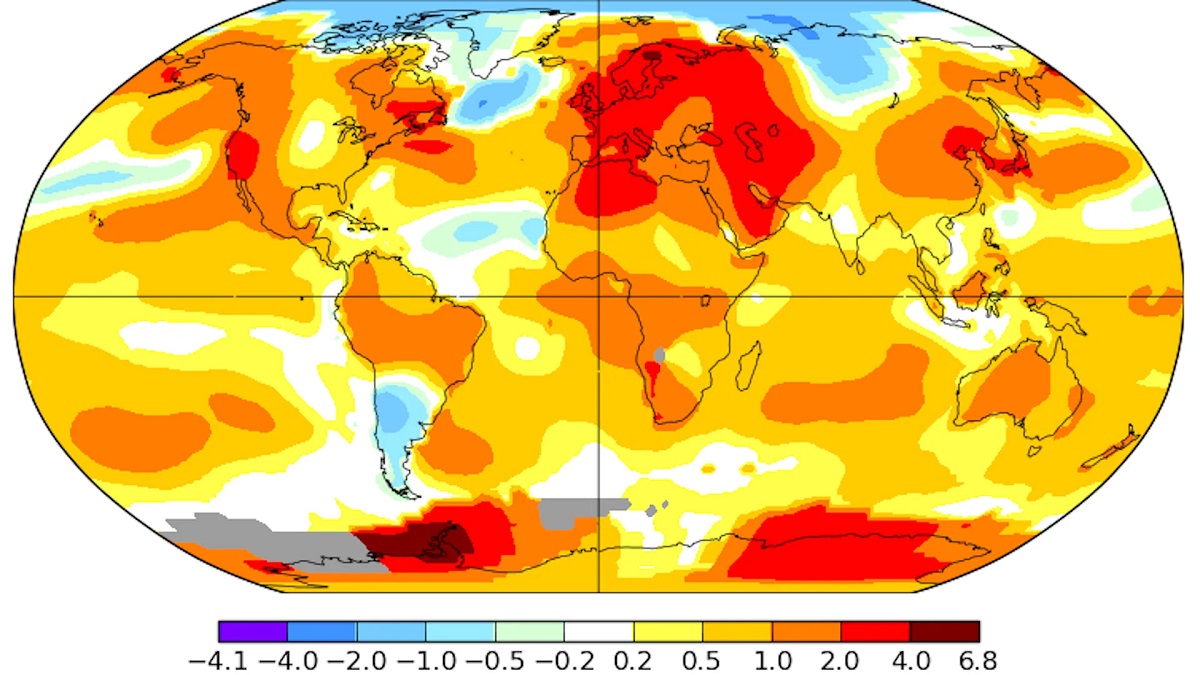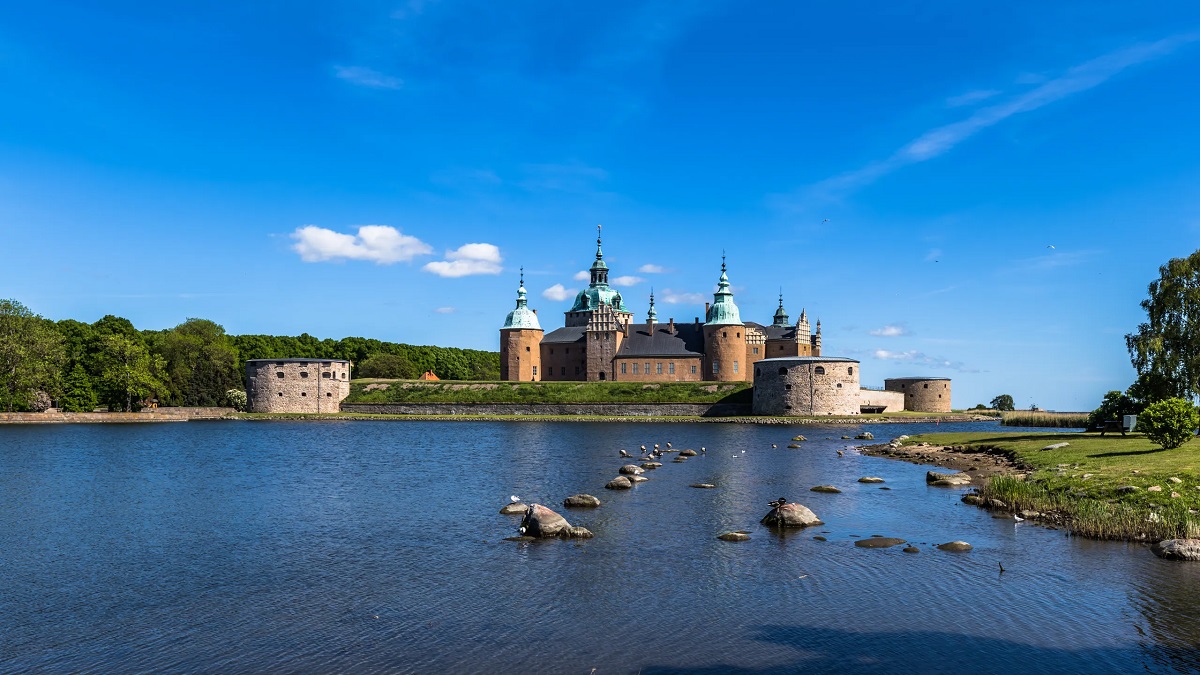Home>Weather and Climate>The Climate Of The Marine Biome: Explained And Explored
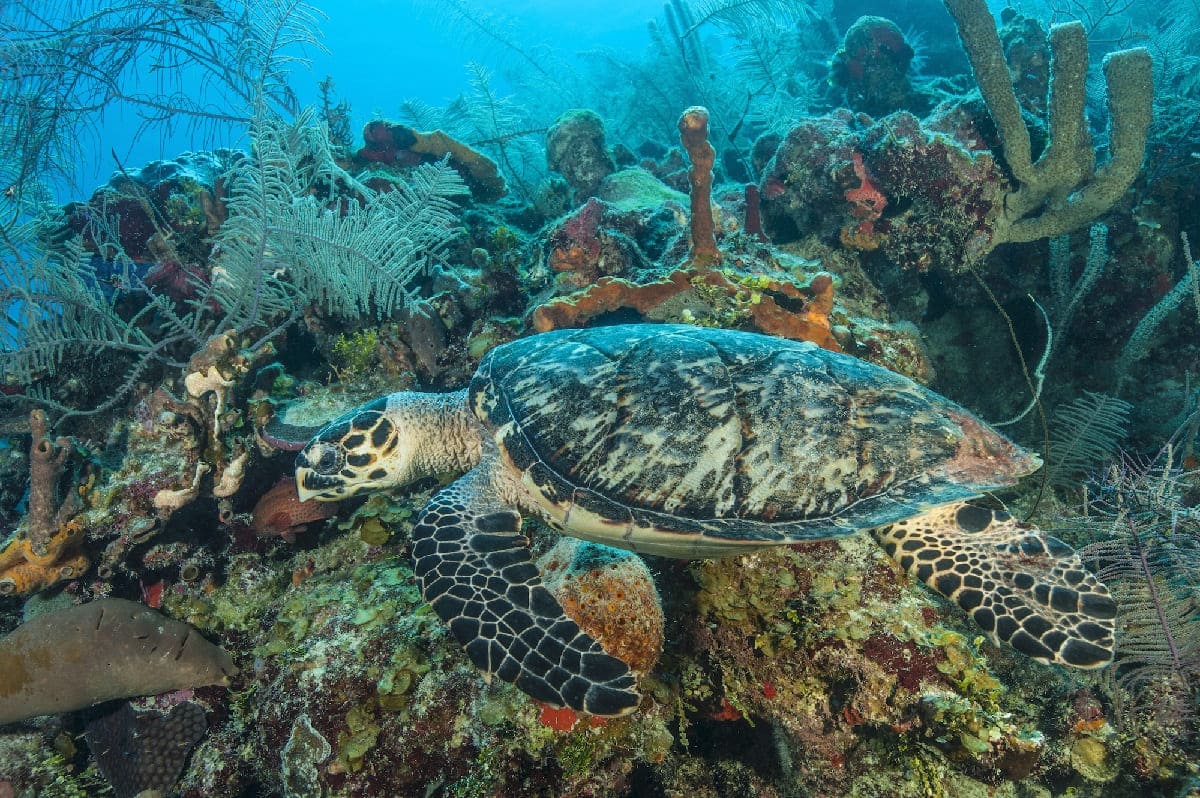

Weather and Climate
The Climate Of The Marine Biome: Explained And Explored
Published: March 7, 2024
Explore the weather and climate of the marine biome in this comprehensive guide. Understand the unique environmental factors that shape this diverse ecosystem.
(Many of the links in this article redirect to a specific reviewed product. Your purchase of these products through affiliate links helps to generate commission for Temperatures.com, at no extra cost. Learn more)
Table of Contents
Introduction
The marine biome, encompassing the world's oceans, is a vast and dynamic ecosystem that supports a staggering array of life. From the sun-drenched surface waters to the mysterious depths of the abyssal zone, the marine biome is a realm of constant change and adaptation. Its climate plays a pivotal role in shaping the diverse habitats and influencing the behaviors of countless marine organisms.
The marine biome is a realm of extremes, where temperatures can fluctuate dramatically from the equator to the poles. The interplay of ocean currents, wind patterns, and solar radiation creates a complex tapestry of climates within this biome. From the balmy waters of tropical coral reefs to the frigid expanses of polar seas, the marine biome showcases a remarkable spectrum of environmental conditions.
In this article, we will delve into the intricacies of the marine biome's climate, exploring the factors that shape its diverse weather patterns and the profound impact of climate change on this fragile ecosystem. We will also uncover the remarkable adaptations of marine organisms to the ever-changing climate and the ongoing conservation efforts aimed at preserving the delicate balance of the marine biome.
Join us on a captivating journey through the depths of the ocean as we unravel the mysteries of the marine biome's climate and gain a deeper understanding of the intricate web of life that thrives within its watery embrace.
Characteristics of the Marine Biome
The marine biome, covering approximately 71% of the Earth's surface, is a realm of unparalleled diversity and complexity. Its defining characteristic is the presence of saltwater, which distinguishes it from other biomes on the planet. This vast expanse of oceanic habitats encompasses a wide range of ecosystems, each with its own unique features and inhabitants.
1. Biodiversity
The marine biome is renowned for its extraordinary biodiversity, harboring a staggering variety of life forms. From microscopic phytoplankton to majestic whales, the ocean teems with an astonishing array of organisms. Coral reefs, often referred to as the "rainforests of the sea," are particularly rich in biodiversity, providing a habitat for countless species of fish, invertebrates, and algae.
2. Physical Features
The marine biome encompasses diverse physical features, including continental shelves, abyssal plains, and oceanic trenches. These features contribute to the biome's remarkable heterogeneity, creating a mosaic of habitats that support a wide spectrum of marine life. The topography of the ocean floor, characterized by underwater mountains, canyons, and volcanic vents, further enriches the marine biome's physical diversity.
3. Temperature Variability
The marine biome exhibits significant temperature variability across different regions. From the warm, sunlit waters of the tropics to the icy expanses of polar seas, the ocean's temperature gradients play a crucial role in shaping the distribution of marine species and influencing their physiological processes. These temperature variations contribute to the formation of distinct marine climates, each with its own set of environmental conditions.
4. Salinity Levels
Another defining characteristic of the marine biome is the varying salinity levels found in different oceanic regions. Factors such as evaporation, precipitation, and freshwater input from rivers influence the salinity of seawater, leading to the formation of distinct marine environments. Estuaries, where freshwater and saltwater mix, represent a unique transitional zone within the marine biome, supporting a rich assemblage of specialized species.
5. Light Penetration
Light penetration is a crucial factor in the marine biome, influencing the distribution of photosynthetic organisms and the behavior of marine animals. In the sunlit upper layers of the ocean, photosynthetic algae and phytoplankton thrive, forming the foundation of the marine food web. As depth increases, light penetration diminishes, shaping the distribution of species and contributing to the unique adaptations of deep-sea organisms.
The characteristics of the marine biome, including its biodiversity, physical features, temperature variability, salinity levels, and light penetration, collectively contribute to the biome's unparalleled richness and ecological significance. This intricate tapestry of marine environments provides a captivating backdrop for the myriad life forms that have evolved to thrive within its boundless expanse.
Factors Affecting the Climate of the Marine Biome
The climate of the marine biome is influenced by a myriad of factors, each playing a crucial role in shaping the environmental conditions that define this vast and diverse ecosystem. These factors interact in complex ways, giving rise to the distinct climates found within the marine biome and influencing the distribution of marine life. Understanding the key determinants of marine climate is essential for unraveling the intricate dynamics of this extraordinary biome.
-
Solar Radiation: Solar radiation is a primary driver of the marine biome's climate, exerting a profound influence on temperature patterns and atmospheric circulation. The unequal heating of the Earth's surface by the sun leads to the formation of distinct temperature gradients in the oceans, giving rise to diverse marine climates, from the warm waters of the tropics to the cooler regions near the poles.
-
Ocean Currents: Ocean currents play a pivotal role in regulating the distribution of heat and nutrients within the marine biome. Warm and cold currents, such as the Gulf Stream and the Labrador Current, respectively, contribute to the formation of distinct climate zones and influence weather patterns along coastal regions. These currents also impact the movement of marine species, shaping their distribution and migration patterns.
-
Atmospheric Circulation: The global patterns of atmospheric circulation, driven by the Earth's rotation and solar heating, have a significant impact on the climate of the marine biome. The movement of air masses, the formation of pressure systems, and the occurrence of prevailing winds all contribute to the creation of diverse climate zones within the marine environment, influencing factors such as temperature, precipitation, and storm patterns.
-
Topography and Geography: The topography and geography of the ocean floor and coastal regions play a crucial role in shaping the climate of the marine biome. Features such as continental shelves, oceanic trenches, and coastal mountain ranges influence local weather patterns, ocean circulation, and the formation of unique habitats that support a rich diversity of marine life.
-
Seasonal Variability: Seasonal changes, driven by the tilt of the Earth's axis and its orbit around the sun, contribute to the seasonal variability of marine climates. The transition between seasons influences factors such as temperature, precipitation, and daylight duration, impacting the behavior and life cycles of marine organisms.
-
Human Activities: Human activities, including pollution, overfishing, and coastal development, can have a significant impact on the climate of the marine biome. Pollution from industrial and agricultural sources can alter water quality and disrupt marine ecosystems, while overfishing can lead to imbalances in marine food webs. Coastal development can also contribute to habitat destruction and alter local climate patterns.
The interplay of these factors creates a tapestry of climates within the marine biome, each with its own unique characteristics and ecological significance. By unraveling the intricate web of influences that shape marine climate, we gain a deeper appreciation for the complexity and resilience of this remarkable ecosystem.
Impact of Climate Change on the Marine Biome
Climate change poses a formidable threat to the delicate balance of the marine biome, exerting widespread and profound impacts on its ecological integrity and the well-being of marine organisms. The escalating levels of greenhouse gases, primarily carbon dioxide, in the Earth's atmosphere have led to a series of interconnected changes in the marine environment, with far-reaching consequences for oceanic ecosystems.
One of the most pressing concerns related to climate change is the phenomenon of ocean acidification. As the oceans absorb excess carbon dioxide from the atmosphere, they undergo a process of acidification, leading to a decrease in pH levels. This acidification poses a significant threat to marine life, particularly organisms with calcium carbonate shells or skeletons, such as corals, mollusks, and certain types of plankton. The reduced pH levels hinder the ability of these organisms to build and maintain their protective structures, thereby jeopardizing their survival and disrupting the intricate web of marine biodiversity.
Rising sea temperatures, another consequence of climate change, have far-reaching implications for marine ecosystems. Warming waters can lead to the bleaching of coral reefs, a phenomenon in which corals expel the symbiotic algae living within their tissues, causing them to turn white and become more susceptible to disease. The loss of vibrant and diverse coral reef ecosystems not only diminishes the habitat for numerous marine species but also undermines the resilience of coastal communities that rely on reefs for protection against storm surges and erosion.
Furthermore, climate change has been linked to shifts in ocean currents and circulation patterns, altering the distribution of nutrients and influencing the migratory patterns of marine species. These changes can disrupt established food webs and lead to mismatches in the timing of critical life cycle events, such as spawning and migration, potentially destabilizing marine ecosystems and diminishing the productivity of fisheries.
The repercussions of climate change on the marine biome extend beyond ecological concerns, impacting human societies that depend on the ocean for sustenance, livelihoods, and cultural heritage. Coastal communities face heightened risks from sea-level rise, intensified storm surges, and the loss of vital marine resources, posing significant challenges to their resilience and well-being.
Addressing the multifaceted impacts of climate change on the marine biome requires concerted global efforts to mitigate greenhouse gas emissions, enhance the resilience of marine ecosystems, and promote sustainable ocean management practices. By safeguarding the health and vitality of the marine biome, we can uphold the intricate tapestry of life that thrives within its watery expanse and secure a sustainable future for generations to come.
Adaptations of Marine Organisms to Climate Variability
Marine organisms have evolved a remarkable array of adaptations to cope with the inherent variability of the marine climate. These adaptations enable them to thrive in diverse environmental conditions, from the extreme cold of polar seas to the sun-drenched warmth of tropical waters. The intricate web of life within the marine biome is a testament to the resilience and ingenuity of these organisms, showcasing a myriad of strategies that allow them to navigate the challenges posed by climate variability.
-
Thermoregulation: Many marine organisms have developed sophisticated mechanisms for thermoregulation, allowing them to maintain optimal body temperatures in the face of fluctuating environmental conditions. Some species, such as certain fish and marine mammals, possess specialized physiological adaptations that enable them to conserve or dissipate heat as needed, ensuring their survival in cold or warm waters.
-
Migration: Migration is a widespread adaptation among marine organisms, allowing them to respond to changes in climate and resource availability. From the seasonal movements of migratory fish and marine mammals to the epic journeys of sea turtles and seabirds, migration enables these organisms to exploit diverse habitats and navigate the challenges of climate variability.
-
Habitat Specialization: Many marine species have evolved to thrive in specific habitats within the marine biome, capitalizing on the unique environmental conditions offered by these niches. From the intricate symbiotic relationships found in coral reefs to the specialized adaptations of deep-sea organisms, habitat specialization is a key strategy for coping with the variability of marine climates.
-
Reproductive Strategies: Marine organisms exhibit a diverse array of reproductive strategies that are finely tuned to the variability of the marine climate. Some species synchronize their reproductive cycles with seasonal changes, ensuring that their offspring have the best chance of survival in fluctuating environmental conditions. Others have evolved unique reproductive behaviors and life history traits that enhance their resilience in the face of climate variability.
-
Biochemical Adaptations: At the molecular level, marine organisms have developed biochemical adaptations that enable them to thrive in diverse marine climates. From the production of antifreeze proteins in polar fish to the heat-shock proteins found in thermally stressed organisms, these biochemical adaptations play a crucial role in enhancing the resilience of marine life to climate variability.
The adaptations of marine organisms to climate variability underscore the remarkable capacity of life to persist and thrive in the dynamic and challenging environments of the marine biome. By unraveling the intricacies of these adaptations, we gain a deeper appreciation for the resilience and diversity of marine life, inspiring a profound sense of wonder and admiration for the intricate tapestry of organisms that call the ocean their home.
Conservation Efforts for the Marine Biome
Conservation efforts for the marine biome are essential to safeguard the ecological integrity and resilience of this vast and diverse ecosystem. With the mounting challenges posed by climate change, pollution, overfishing, and habitat destruction, concerted global initiatives are crucial for preserving the invaluable biodiversity and ecological services provided by the marine biome.
-
Marine Protected Areas (MPAs): Establishing and effectively managing marine protected areas is a cornerstone of conservation efforts for the marine biome. MPAs serve as sanctuaries for marine species, safeguarding critical habitats, and promoting the recovery of depleted fish stocks. These protected areas also contribute to the resilience of marine ecosystems, providing refuges for vulnerable species and supporting the maintenance of biodiversity.
-
Sustainable Fisheries Management: Implementing sustainable fisheries management practices is paramount for ensuring the long-term viability of marine resources. By setting catch limits, regulating fishing gear, and combating illegal, unreported, and unregulated (IUU) fishing activities, conservation initiatives aim to mitigate the impacts of overfishing and promote the sustainable utilization of marine fisheries.
-
Reduction of Marine Pollution: Addressing the pervasive issue of marine pollution is a key focus of conservation efforts. Strategies to reduce plastic pollution, minimize nutrient runoff, and mitigate the impacts of oil spills are essential for preserving the health of marine ecosystems. Public awareness campaigns and policy measures aimed at curbing pollution sources play a pivotal role in safeguarding the marine biome.
-
Climate Resilience and Adaptation: Building climate resilience within marine ecosystems is a critical component of conservation efforts. This involves enhancing the adaptive capacity of marine species, restoring degraded habitats, and implementing measures to mitigate the impacts of ocean acidification and rising sea temperatures. By promoting climate-smart conservation strategies, initiatives seek to bolster the resilience of the marine biome in the face of ongoing climate change.
-
Community Engagement and Education: Engaging local communities and fostering public awareness are integral to successful marine conservation efforts. Empowering coastal communities to participate in conservation initiatives, promoting sustainable livelihoods, and educating the public about the importance of marine biodiversity are essential for garnering support and fostering a sense of stewardship for the marine biome.
-
International Collaboration and Policy Advocacy: Collaboration at the international level is crucial for addressing transboundary challenges facing the marine biome. Through diplomatic efforts, policy advocacy, and the implementation of international agreements such as the United Nations Convention on the Law of the Sea (UNCLOS) and the Convention on Biological Diversity (CBD), conservation initiatives strive to promote the sustainable management of marine resources and the protection of marine biodiversity.
By embracing a holistic approach that integrates science, policy, and community engagement, conservation efforts for the marine biome aspire to uphold the intrinsic value of this extraordinary ecosystem and secure a sustainable future for marine life and human societies alike.
Conclusion
In conclusion, the marine biome stands as a testament to the awe-inspiring diversity and resilience of life within our planet's oceans. From the sunlit shallows to the enigmatic depths, this vast ecosystem harbors a wealth of life forms, each intricately woven into the fabric of its climate and habitats. The characteristics of the marine biome, including its biodiversity, physical features, temperature variability, salinity levels, and light penetration, collectively contribute to its unparalleled richness and ecological significance.
The climate of the marine biome is a product of complex interactions between solar radiation, ocean currents, atmospheric circulation, topography, seasonal variability, and human activities. These factors give rise to a mosaic of climates within the marine environment, shaping the distribution of marine life and influencing the dynamics of oceanic ecosystems. However, the marine biome is not immune to the far-reaching impacts of climate change, which pose significant threats to its ecological integrity and the well-being of marine organisms.
Despite these challenges, marine organisms have demonstrated remarkable adaptations to cope with climate variability, showcasing a diverse array of strategies that enable them to thrive in the dynamic and challenging environments of the ocean. From thermoregulation and migration to habitat specialization and reproductive strategies, these adaptations underscore the resilience and ingenuity of marine life, inspiring a profound sense of wonder and admiration for the intricate tapestry of organisms that call the ocean their home.
Conservation efforts for the marine biome are paramount for safeguarding its invaluable biodiversity and ecological services. Through the establishment of marine protected areas, sustainable fisheries management, reduction of marine pollution, climate resilience and adaptation, community engagement, and international collaboration, initiatives strive to promote the sustainable management of marine resources and the protection of marine biodiversity.
In essence, the marine biome is a realm of wonder and complexity, where the interplay of climate, habitats, and life forms unfolds in a mesmerizing tapestry of ecological harmony. By embracing a holistic approach to conservation and fostering a sense of stewardship for the marine environment, we can uphold the intrinsic value of this extraordinary ecosystem and secure a sustainable future for marine life and human societies alike.

